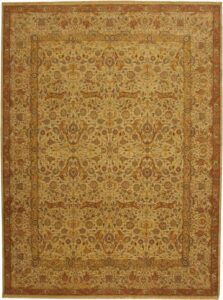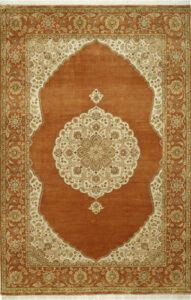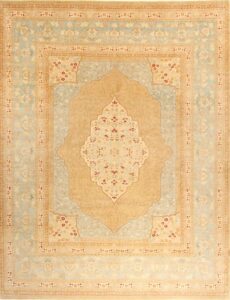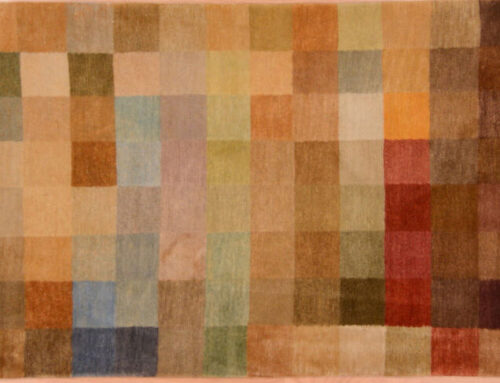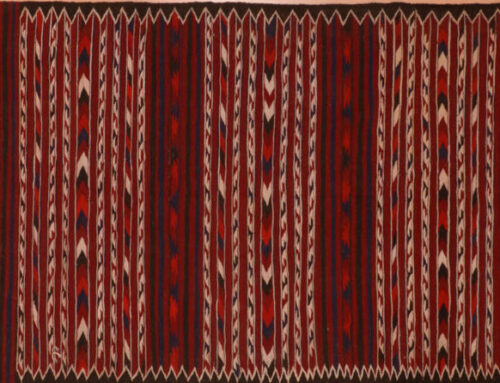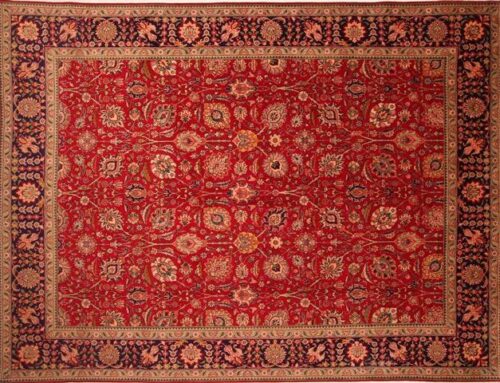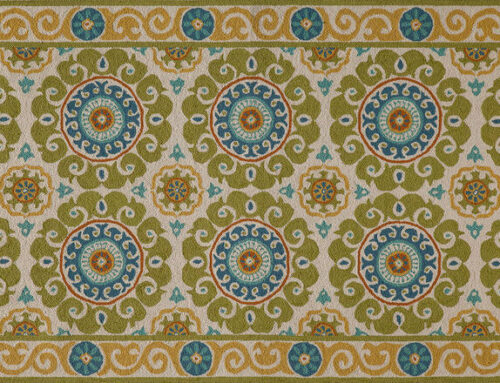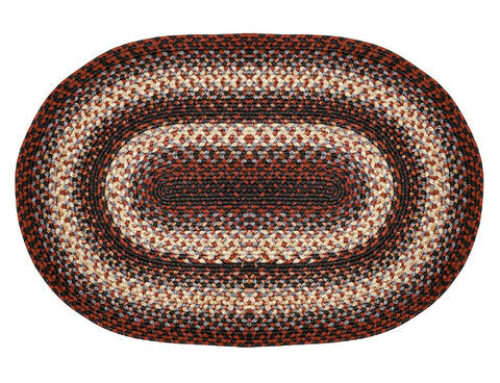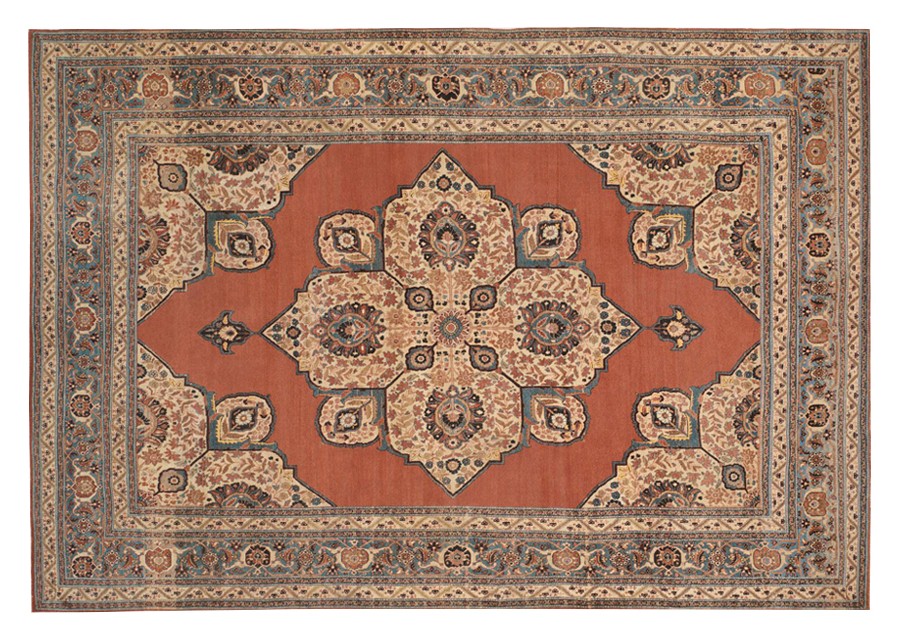
Origin of Haji Jalili Rugs 1
Haji Jalili was a famous master weaver (ustad) and carpet manufacturer from Tabriz, in northwestern Persia.
History of Haji Jalili Rugs
Haji Jalili began making rugs and carpets during the early 1880s and continued his craft into the turn of the century. His large workshop employed an experienced staff of cartoon-design artists, dye masters, and skilled weavers. Haji Jalili rugs are highly regarded in the antique market for their coloration, design, and high-grade quality weaves.
Haji Jalili carpets have been in great demand since World War II. The carpets are valuable and appreciated as floor coverings by the affluent and by art lovers. Interior designers favor these carpets because of the copper-colored background and muted coloration overall. Some oversize Haji Jalili Tabriz carpets have reached prices close to $250,000 in the market.
Haji Jalili Tabriz formats range from mats to rugs of large room dimensions. The rugs and carpets are made from very good to fine in grade quality grade. Various Tabriz weavers imitated the popular Haji Jalili carpet designs and coloration in a lower grade quality beginning in Haji Jalili’s weaving era through the first quarter of the twentieth century. These knockoff carpets are available in the antique trade and are called by the nickname “Haj Khalili” by dealers instead of the original name of the masterpieces, Haji Jalili.
Characteristics of Haji Jalili Rugs
-
Material and Knots
Most carpets have a cotton foundation and a wool pile. A small percentage of carpets with a silk foundations and a silk pile were woven. Rare examples with partial cotton piles are encountered. The Turkish (symmetric) knot is always employed.
-
Color
Haji Jalilis have a distinguishable copper (red-dish brown) color field; a small percentage were made with ivory or dark blue. These colors were interchangeable for the border. In addition to these colors, blues, browns, greens, grays, and gold adorn the design elements, minor borders, and design outlines.
-
Design and Pattern
Haji Jalili designs are floral, with medallion or allover styles. The Shah Abbas palmette, leaf and vine motifs, and the Open Field with a center medallion and corners are among the most popular designs. The traditional motifs of Arabesques (eslim), Boteh (paisley), Herati (fish), Minakhani (rosette-linked trellis), Shrub, flower head, cypress tree, and willow tree, among others, are precisely woven in the field, medallion, and stylized corners. Smaller Haji Jalili rugs feature the Mihrab (prayer arch) design with columns supporting the arch. Other designs include the Tree of Life and Vase with animals, and birds. The borders generally display the palmette with leaves and vines, cypress trees, willow trees, or stylized palmette and cartouche designs. Farsi-language poetry or miniature flowers with leaves and vines are sometimes woven in the border cartouches.
Collections
- Haji Jalili Rug | © Rugman
- Haji Jalili Rug | © Rugman
- Haji Jalili Rug | © Rugman


